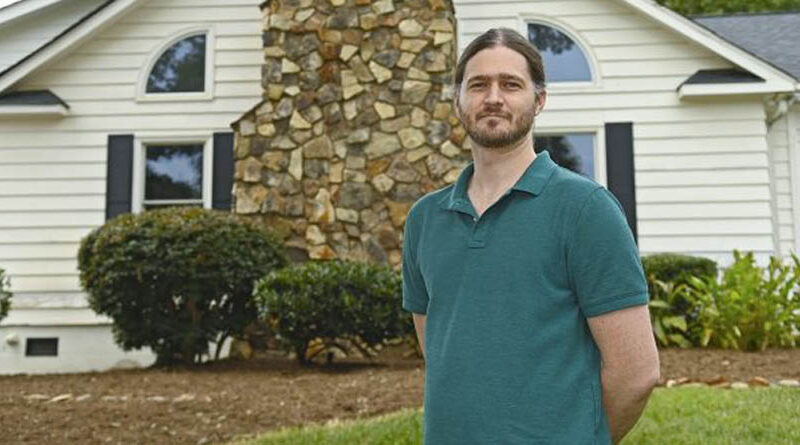Clay Harper Is First Artist-In-Residence At Charlotte’s Sue Lemmond Helms Community Art House
As a digital media artist, Clay Harper works daily with bits and bytes and software and screens. So it may come as a surprise that at the core of his creative thought and practice is a critique of the virtual and an advocacy for the physical.
“I am a digital media artist that insists on experience,” he says. “I’m just really interested in making people remember that art is something that you have to see in person.”
Harper is the first visiting artist-in-residence to inhabit the Sue Lemmond Helms Community Art House, a new space for artistic creation, education, and collaboration donated to UNC Charlotte for the College of Arts + Architecture. The house was recently dedicated in memory of longtime local arts educator and supporter Sue Lemmond Helms.
Harper is in his second year teaching in the Department of Art & Art History, where his courses have included basic animation, game design, video art, and animation production. While he helps students master the latest technologies, he also challenges them to consider their relationships to screens.
“I am interested in the politics of screens,” Harper says, adding that in contemporary society, so many of our experiences are “mediated or filtered through the screen.” For example, he says, watch how museum visitors engage with the art they are viewing. More often than not, people move from artwork to artwork with their phone cameras raised, snapping pictures rather than approaching art as “something that offers us alternative ways of seeing.”
Harper’s art appears on screens, but his large-scale installations turn passive consumption inside out. “I like things with friction that slow you down and don’t make it so easily consumed.”
Take, for instance, his you/too (2022), pictured left, an installation of four LED TVs running four MP4 videos, which Harper presented at his alma mater, Principia College in Illinois.
“I’ve chosen to make art that challenges the screen directly,” he wrote in an artist statement, “inverting, distorting, and interrupting its logic, transforming a kind of seeing that is easy and glib into something that is convoluted and cryptic. If a picture really is worth a thousand words, we should pause to consider just how many of our words the screen chooses for us.”
Harper is completing a PhD in Media Art & Text at Virginia Commonwealth University and is grappling with the philosophical implications of digital technologies, particularly artificial intelligence. His dissertation is about “how computational media creates ideas about humanness or non-humanness.” And he is addressing the impact of AI on art with his students.
“The skills we are trying to teach students – individuality, self-expression, eccentricity – are in conflict with how AI functions,” producing “the most generic looking style,” he says. AI – particularly machine learning – can be a useful tool for artists, making tedious tasks quicker and easier, but it can also get in the way of what is perhaps an artist’s most important attribute: a unique personal expression.
As the inaugural artist-in-residence in the Sue Lemmond Helms Community Art House, Harper says he sees “so much potential in that property.”
“I see a lot of opportunities for workshops and demos or artist talks, but also for informal gatherings like a community meal or a game night or watching a movie. I think that kind of thing is really important for artists.” He thinks that the large home could become a small artist colony.
“I’m really excited about what it could be used for with a small community of residents.”

